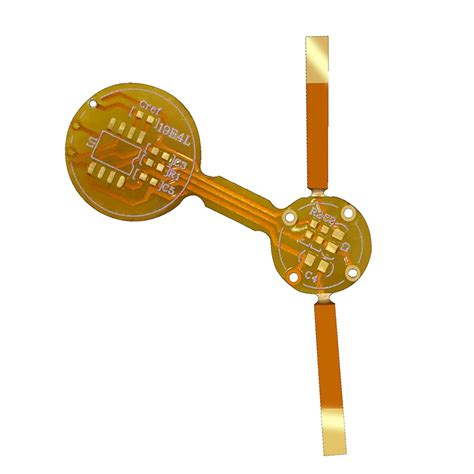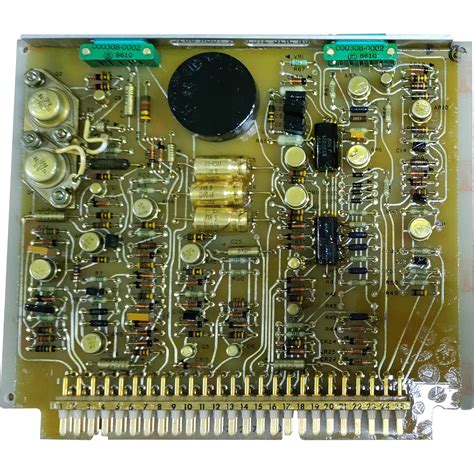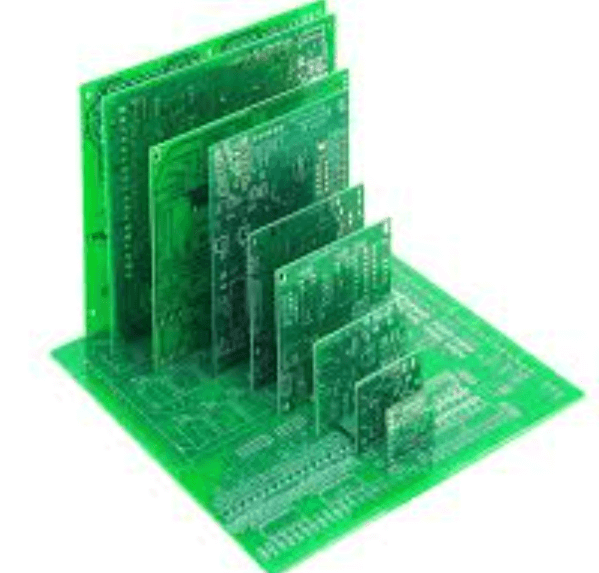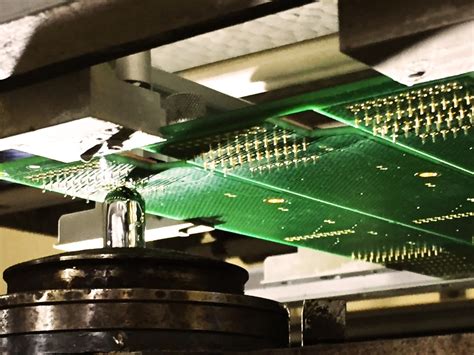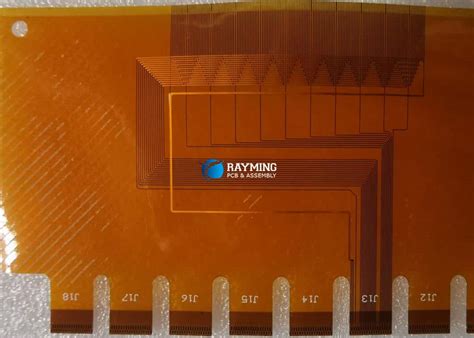Optimizing Designs with Advanced Circuits Flex PCBs
Key Takeaways
In the realm of pcb manufacturing, embracing Flex PCBs can profoundly impact product performance and efficiency. As you navigate the evolving landscape of electronics, understanding the benefits offered by Advanced Circuits in this domain is crucial. Rigid-flex technology provides a unique fusion of flexibility and durability, allowing you to design products that can endure dynamic environments while maximizing space utilization. When engaging with pcb manufacturing companies, it’s essential to consider how their pcb manufacturing cost aligns with the quality and innovation offered in their Flex PCB solutions. By adopting effective design optimization techniques, you not only enhance manufacturability but also reduce overall production times, thereby improving your pcb manufacturing business outcomes. With comprehensive DFM support, these processes ensure that each step adheres to stringent quality standards, resulting in reliable and robust electronic products. This synergy between technology and design redefines what’s possible in modern electronics, allowing you to stay ahead of market demands while maintaining cost efficiency.
Introduction to Advanced Circuits Flex PCBs
In today’s fast-paced electronics landscape, optimizing your designs with Flex PCBs from Advanced Circuits can significantly enhance your product’s performance. These printed circuit boards allow for greater flexibility and adaptability, catering to the diverse needs of various applications. When considering pcb manufacturing, you might ask how these advanced solutions change the game. Firstly, employing rigid-flex technology enables your designs to achieve a compact form factor while maintaining reliability, which is essential for modern electronic devices. As you explore potential pcb manufacturing companies, it’s crucial to focus on those that offer robust support and expertise in designing Flex PCBs tailored to your specific requirements.
Not only does the use of Flex PCBs optimize your product’s layout, but it also contributes favorable outcomes when considering the overall pcb manufacturing cost. The integration of this technology into your designs can streamline processes, reduce component counts, and improve signal integrity—all factors that influence both performance and cost-effectiveness in the pcb manufacturing business. As you embark on this journey, remember that choosing a partner skilled in design for manufacturability (DFM) is vital for ensuring a seamless transition from concept to reality, resulting in products that are not only innovative but also thoroughly reliable. With the right approach and resources, you can leverage advanced circuits effectively to meet the demands of the electronics market.
The Benefits of Rigid-Flex Technology
Rigid-flex technology is revolutionizing the landscape of PCB manufacturing, offering a unique blend of flexibility and strength that addresses the evolving demands of modern electronics. By combining the properties of rigid and flexible circuits, you can create a lightweight, compact design that optimizes space without sacrificing performance. This is particularly beneficial for complex devices such as smartphones, wearables, and medical instruments where space is at a premium. The integration of flexible circuitry allows for continuous bending and twisting, which helps reduce stress on connections and prevents failure over time.
One significant advantage of rigid-flex PCBs is their ability to minimize the overall PCB manufacturing cost. By reducing the number of separate components needed in multi-layer designs, you not only cut down on materials but also streamline assembly processes. This efficiency can lead to quicker turnaround times from PCB manufacturing companies and a reduction in labor costs associated with traditional rigid boards.
“Invest in technology that not only meets today’s needs but also anticipates tomorrow’s challenges.”
Moreover, employing rigid-flex technology in your design ensures that components are better protected from environmental stresses, enhancing durability and reliability – critical factors for any PCB manufacturing business focused on longevity. As your products are increasingly expected to perform under varied conditions, leveraging this technology is essential for sustaining product longevity while addressing customer expectations effectively.
In summary, the incorporation of rigid-flex PCBs into your projects not only enhances performance but also leads to significant cost-savings throughout the production cycle, setting you up for success in a competitive marketplace.
Design Optimization Techniques for Flex PCBs
When engaging in pcb manufacturing, particularly with Flex PCBs, optimizing your design is paramount to enhancing both functionality and efficiency. One effective approach involves leveraging layer stacking techniques, which allows for the integration of multiple functionalities into a single circuit board, ultimately reducing the overall size and weight. Additionally, ensuring a proper trace width can significantly impact thermal performance and reliability. Utilizing tools such as simulation software will enable you to visualize and assess potential complications before production, potentially saving time and costs in the pcb manufacturing process.
When considering your options, it’s also wise to collaborate with reputable pcb manufacturing companies that specialize in rigid-flex technology. This collaboration can offer insights into best practices that align with the specific requirements of your project. To better manage pcb manufacturing costs, always conduct thorough assessments of your materials and assembly methods. Balancing cost with quality helps prevent issues that could arise later in production.
Finally, employing design for manufacturability (DFM) techniques is essential to streamline production efficiency. By anticipating challenges during the design phase, you set up your pcb manufacturing business for success while ensuring that your Flex PCBs deliver superior performance in various applications. Embracing these design optimization techniques will not only enhance product durability but also boost overall market competitiveness in this rapidly evolving technology landscape.
Ensuring Robust Manufacturing with DFM Support
To ensure top-notch performance in pcb manufacturing, it’s crucial to incorporate Design for Manufacturability (DFM) support in your processes. DFM enables you to align your designs efficiently with pcb manufacturing companies, helping to identify potential issues early in the design phase. By leveraging expert DFM assistance, you can reduce the overall pcb manufacturing cost while maximizing the reliability of your flex PCBs. This is especially important when integrating complex components, as a well-optimized design minimizes errors during production. Not only does effective DFM support streamline the pcb manufacturing business, but it also ensures that your product meets high-quality standards, resulting in enhanced durability and performance. The collaboration between designers and manufacturers becomes vital to navigate the intricate challenges posed by modern electronics, ensuring that every project transitions smoothly from concept to production. By prioritizing DFM, you unlock the potential for creating innovative and efficient flex PCB solutions that can significantly elevate your product’s market competitiveness.
Enhancing Product Performance with Flex PCB Solutions
Utilizing Flex PCBs in your designs can significantly enhance product performance, particularly in applications where space and weight are critical. Advanced Circuits integrates cutting-edge technology with rigid-flex capabilities to create PCBs that are not only lighter but also more flexible and durable. This adaptability allows for strategic placement within modern electronic products, enabling you to optimize layout without compromising on functionality.
When selecting PCB manufacturing companies, it is essential to understand how their processes impact the overall PCB manufacturing cost and performance. By leveraging the strengths of Flex PCBs, you can reduce the number of components required in your design, streamlining the entire manufacturing process and thereby potentially lowering your overall manufacturing costs. This approach helps you maintain a competitive edge in your PCB manufacturing business.
Consider the following table showcasing the key advantages of using Flex PCBs:
| Advantage | Description |
|---|---|
| Space Efficiency | Flexible designs reduce footprint while maintaining functionality. |
| Weight Reduction | Lighter materials contribute to overall product weight savings. |
| Enhanced Durability | Rigid-flex technology increases resilience against mechanical stress. |
| Design Versatility | Ideal for complex shapes and multifaceted electronic devices. |
Incorporating these features allows for a more robust end product that meets modern demands for efficiency and reliability. As you explore design strategies, keep in mind that prioritizing advanced materials like Flex PCBs can lead to substantial enhancements in performance across various electronic applications.
Case Studies: Successful Implementations of Flex PCBs
Examining real-world applications can provide valuable insights into the effectiveness of Advanced Circuits Flex PCBs. Companies across various industries have reported substantial improvements in product performance, particularly through the use of rigid-flex technology. One notable case involved a consumer electronics manufacturer that sought to streamline the size and weight of their devices while maintaining durability. By collaborating with a leading pcb manufacturing partner, they successfully integrated Flex PCBs into their product line. This allowed them to design a slimmer device without compromising on performance or reliability. Furthermore, through strategic design optimization techniques, this manufacturer was able to reduce the pcb manufacturing costs significantly while enhancing functionality. Another example comes from the automotive sector, where an automotive supplier leveraged Advanced Circuits’ expert DFM support to ensure that their flex circuit designs met rigorous standards for robustness. By tapping into this expertise, they increased production efficiency and minimized waste during their manufacturing processes. These case studies underscore that working with reliable pcb manufacturing companies can lead to successful implementations of Flex PCBs that improve both performance and efficiency in modern electronic products. The forward-thinking approach adopted by these businesses showcases how strategic partnerships in the pcb manufacturing business can unlock innovative solutions tailored to meet evolving market demands.
Future Trends in Flex PCB Technology
As the demand for advanced circuits continues to rise in various industries, future trends in Flex PCB technology are shaping the landscape of pcb manufacturing. You will observe an accelerating shift toward integrated solutions that combine both rigid and flexible substrates. This approach not only enhances the product’s form factor but also improves performance, making it a compelling choice for many pcb manufacturing companies. Moreover, advancements in materials science are leading to new iterations of Flex PCBs that can withstand extreme environments and maintain reliability over time. As you consider these developments, it’s essential to think about how the reduction in pcb manufacturing costs will allow for wider accessibility and adoption of this technology in consumer electronics, healthcare devices, and automotive applications. By staying ahead of these trends, your pcb manufacturing business can become a key player in delivering innovative solutions that meet the evolving needs of the market while ensuring high-quality standards.
Conclusion: The Value of Advanced Circuits in Modern Electronics
In the rapidly evolving landscape of electronics, the role of Advanced Circuits Flex PCBs cannot be understated. By leveraging rigid-flex technology, you can significantly enhance the performance and reliability of your products. The inclusion of these sophisticated designs allows for a reduction in weight and size, which is critical in applications ranging from consumer electronics to automotive systems. Many PCB manufacturing companies are recognizing the importance of this technology, leading to innovations that enable more efficient assembly processes and better utilization of space within devices.
When considering PCB manufacturing cost, integrating advanced designs like Flex PCBs may initially seem higher; however, the long-term benefits such as reduced assembly times and increased durability often offset these expenses. Your participation in this space not only elevates your product’s quality but also positions your PCB manufacturing business at the forefront of industry advancements. By employing effective design optimization techniques tailored for Flex PCBs, you ensure that each unit manufactured is robust, efficient, and capable of meeting contemporary demands. Ultimately, working with Advanced Circuits provides you with a competitive edge in delivering innovative electronic solutions that resonate with users’ needs while maintaining high standards for performance and reliability.
Conclusion: The Value of Advanced Circuits in Modern Electronics
In today’s competitive landscape, Advanced Circuits emerges as a vital player in the evolving pcb manufacturing sector. Leveraging cutting-edge technologies and innovations, you benefit from utilizing Flex PCBs that can significantly enhance your product’s performance. The incorporation of rigid-flex technology not only aids in achieving more compact designs but also ensures greater durability, reducing the overall pcb manufacturing cost. Companies focused on pcb manufacturing business find that optimizing designs with Flex PCBs allows for a remarkable reduction in weight and volume, bringing transformative benefits to various applications. Furthermore, partnering with expert pcb manufacturing companies provides you with crucial Design for Manufacturability (DFM) support, ensuring that your products are not only efficient but also robust against the rigors of daily use. Understanding these advantages positions you as a discerning leader in your field, ready to embrace the future trends shaping the industry while maximizing your products’ reliability and efficiency through intelligent design choices.
FAQs
What are Advanced Circuits Flex PCBs?
Advanced Circuits Flex PCBs are printed circuit boards that can bend and flex without compromising their functionality. They offer a unique solution for complex electronic designs that require flexibility.
How does rigid-flex technology benefit my designs?
Rigid-flex technology combines the benefits of both rigid and flexible PCBs, providing enhanced durability while also allowing for creative design layouts that optimize space. This can significantly lower the pcb manufacturing cost, as fewer components are needed.
What should I consider when choosing a pcb manufacturing company?
When selecting a pcb manufacturing company, consider their capabilities, experience with advanced technologies, customer support, and quality assurance processes. Reliable companies like Advanced Circuits also offer valuable DFM support, which can enhance your design’s manufacturability.
How can I optimize my Flex PCB design?
To optimize your Flex PCB design, focus on minimizing trace lengths, maximizing component placement efficiency, and consulting with experts for design rules compliance. This approach not only enhances performance but can also reduce overall pcb manufacturing costs.
What impact does DFM support have on performance?
Effective DFM (Design for Manufacturability) support ensures your design aligns with industry standards, which leads to more efficient production processes and higher-quality products. This is essential for maintaining competitiveness in the pcb manufacturing business.

